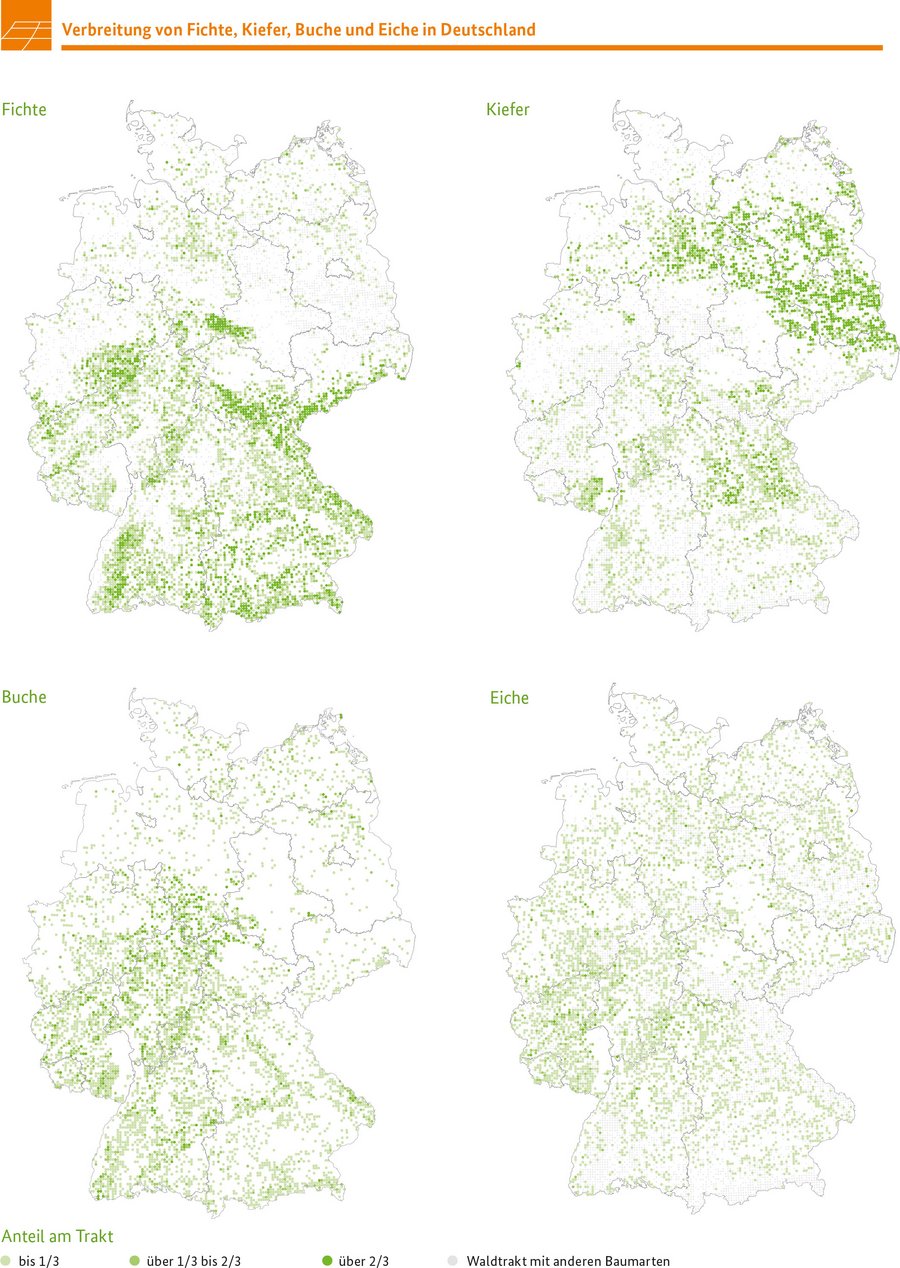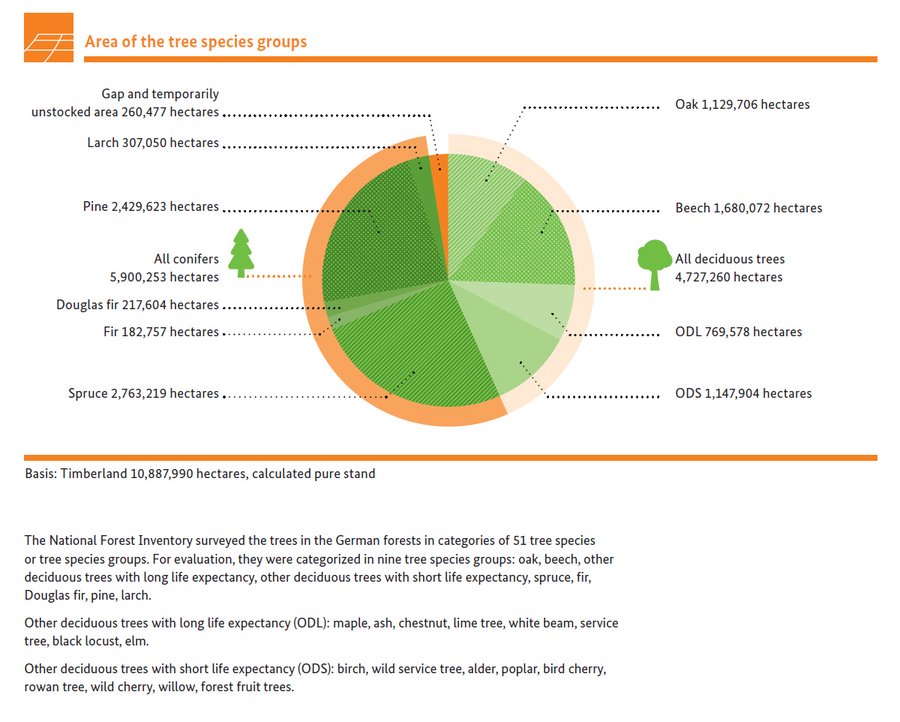The rarer deciduous tree species are put together in the groups “other deciduous trees with long life expectancy” and “other deciduous trees with short life expectancy.” These are tree species such as the hornbeam, which only rarely dominate in upper canopy layers. Other tree species (e.g. the service tree and wild service tree) can only compete with tree species that tolerate shade, like the beech and spruce on dry and warm sites. In this way, the site and tree species-specific competitive strengths naturally differentiate the tree species composition. In addition, game browsing of young tree growth exacts a toll on the rare tree species in particular.
Humans are another force that shapes the forests. Our silvicultural actions decisively determine what tree species grow in the productive forests. Today’s forests testify to both the present and, in particular, the past circumstances, the social needs and the silvicultural decisions made by our ancestors. In past centuries, uncultivated wasteland had to be afforested in order to re-establish the forests and cover timber demand. In this way, the spruce – actually native to the highlands – became widespread, and the pine on poorer sites.
Expeditions introduced non-native tree species to Europe. Compared with our native tree species, these exotic trees play a subordinate role in the German forests. Non-native forest tree species such as the Douglas fir, Japanese larch, red oak, black locust, Sitka spruce, black pine, Mexican white pine, grand fir and others altogether have an area percentage of a little less than 5%. Cultivating these tree species allows for additional silvicultural alternatives to the number of Central European tree species, which was greatly diminished by the Ice Ages. This aspect is gaining importance in view of climate change. The most widespread, although still low in numbers, is the Douglas fir with approximately 218,000 hectares or 2%, followed by the Japanese larch (approx. 83,000 hectares or 0.8%) and red oak (approx. 55,000 hectares or 0.5%).
Area covered by beech tree species or beech forest cover type



